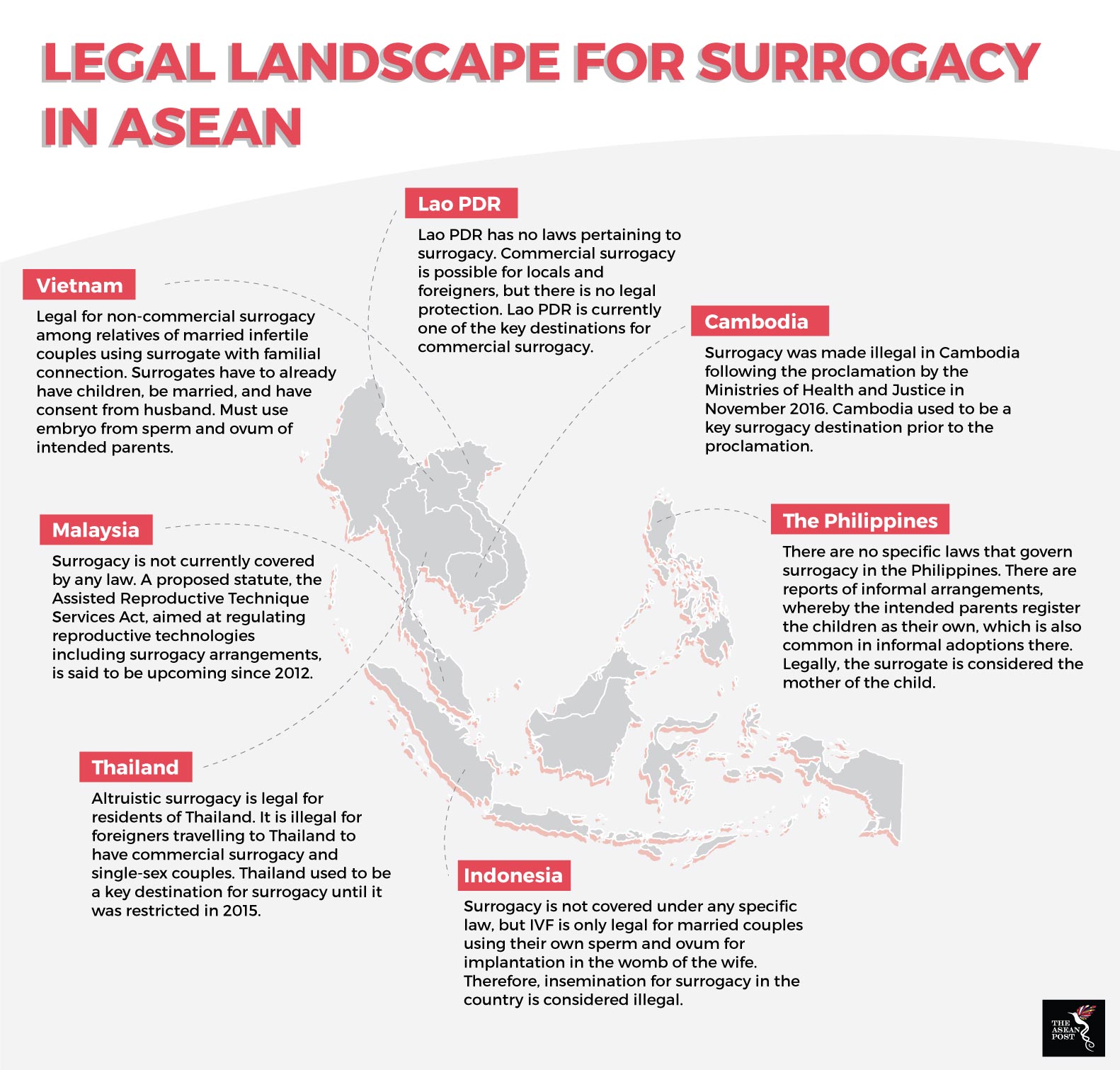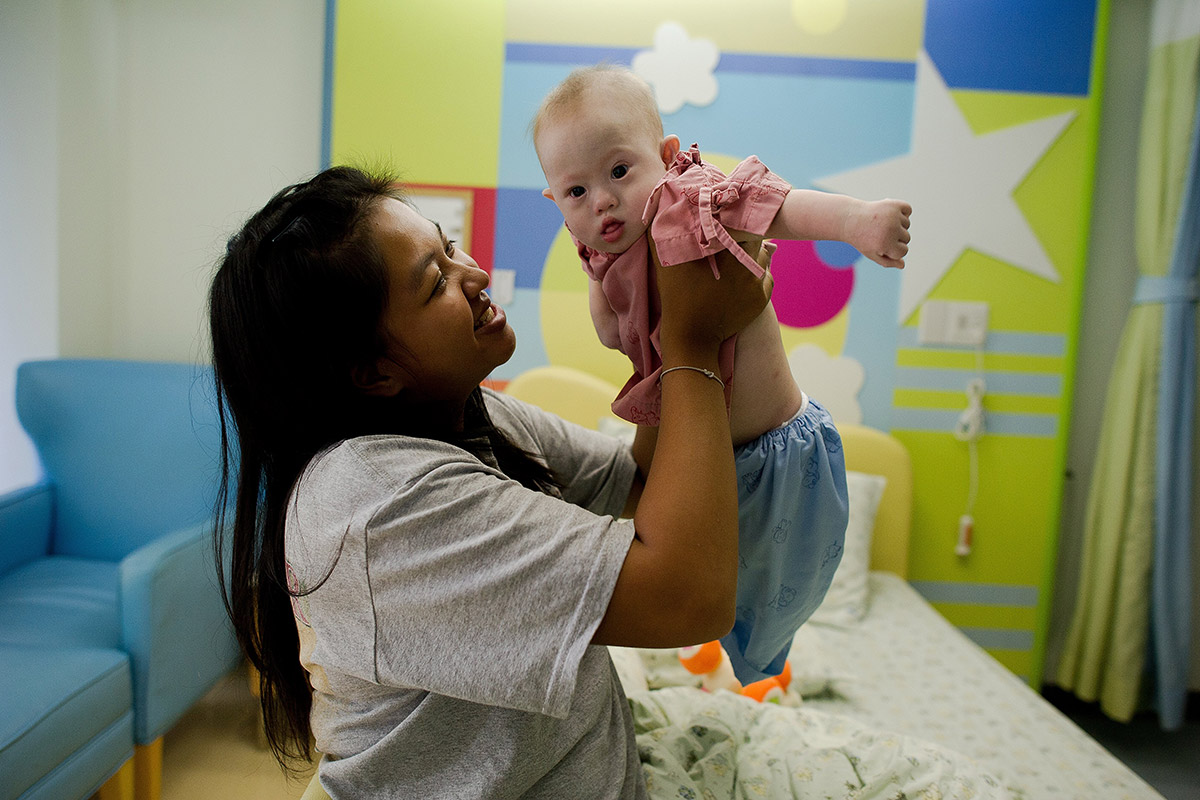First comes love, then comes marriage, then comes baby in a baby carriage. But for those for whom this traditional family-building strategy doesn’t quite resolve itself, advances in the artificial reproductive field have made it possible to have genetically-linked children through surrogacy.
Surrogacy refers to the arrangement in which women become pregnant and carry a baby to term for contracted parties who will then assume the role of parents. Surrogacy could be traditional, in which the ovum of the surrogate mother is used, or gestational, in which the sperm and/or ovum used come from one or both of the intended parents or donors. It could be a commercial transaction, in which money changes hands for the service of a womb or a baby delivered, or an altruistic arrangement, in which the service of carrying the baby is done wholly to enable infertile persons to become parents.
Surrogacy, however, is fraught with issues for all parties involved – the intended parents, the surrogate mothers, and the resulting children. This was evident from the get go as seen in the case of ‘Baby M’ who is the first human to be carried all the way to term through traditional surrogacy. Known now as Melissa Stern, Baby M was born in New Jersey, United States (US), to surrogate and biological mother, Mary Beth Whitehead, in 1985. Whitehead refused to cede custody to the intended parents, William Stern, who is also Baby M’s biological father, and his wife Elizabeth Stern. The courts of New Jersey found that Whitehead was the child's legal mother and declared the surrogacy contract illegal and invalid. However, the court also found it in the best interest of the infant to award custody to the child's biological father.
Another infamous case is that of Baby Gammy, a baby with Down syndrome at the centre of an international surrogacy dispute in 2014 who was allegedly abandoned in Thailand by his Australian intended parents. Baby Gammy and his twin sister, Pipah, were born in December 2013 to surrogate mother Pattaramon Chanbua, using Australian David Farnell's sperm and donor eggs. The Farnell couple was unable to conceive after going through 10 cycles of IVF (In Vitro Fertilisation). Farnell was also unable to adopt as he was convicted of molesting young girls years ago without reoffending. Chanbua, who has two older children, became a surrogate to pay off her debts using the identification of an older relative as she was deemed too young to become a surrogate by the agency.
After Farnell and his wife Wendy returned to Australia with Pipah in February 2014, Chanbua sought orders from Western Australia's Family Court to have Pipah returned to her. The court later found that the Farnells did not intend to abandon Baby Gammy and had wanted to keep him. However, they had to flee the country when civil unrest broke out in Bangkok in early February, while Baby Gammy was still hospitalised. The court documents also stated that at some time during the pregnancy, Chanbua felt connected with the twins and decided she was going to keep the boy. In his judgement, Chief Judge Stephen Thackray decided Pipah should continue to live with the Farnells.
Issues like these are unavoidable when such an emotionally-charged process is commercialised. A person, even when paid to carry a baby, can never function wholly like a machine. Even when both surrogate and intending parties are fully supportive of the intent and aware of the consequences, the business of giving up and taking over a baby is at best heart-rending. Surrogacy has since turned into a business. However, there are concerns about where the markets are growing and how the business is being conducted.
It is an industry
The commercialisation of surrogacy has led to the skyrocketing of costs involved in earlier, more matured and regulated markets. According to Families Through Surrogacy - a consumer-based non-profit networking organisation for surrogates – the costs for intended parents and families who wish to pursue commercial surrogacy have gone up in 2017 to US$150,000 and US$50,000 in surrogacy-friendly US and Canada, respectively. The compensation to the surrogate mother is only one of the costs involved in the process. The others being payments for egg donors, insurance for both surrogates and babies, hospital expenses including post-natal costs, screening and counselling, surrogate expenses, surrogate compensation, legal costs, IVF and antenatal costs, and agency fees. In the case of the US, the biggest payments go toward surrogate compensation, IVF and antenatal expenses and agency fees. These costs are quite specific to living standards in the country.
The mammoth costs of commercial surrogacy have squeezed the demand out of the more regulated markets southward, economically speaking. As a result, the surrogacy industry has popped up all over the world, especially in developing and least developing countries, where legal oversight is lacking and the supply of marginalised young women abundant. Lower levels of education, awareness and empowerment as well as poor socio-economic conditions have made the potential compensation from surrogacy seem like manna from heaven. In some of these countries, the cost of surrogacy can go for as little as US$12,000 as was the case in India when surrogacy was not regulated up to US$35,000 in Ukraine.
They come flocking to Asia
India emerged as one of the key destination for intended parents from developed countries or affluent communities including Bollywood movie stars. The 2002 surrogacy guideline by the Indian Council of Medical Research made the practice legal without legislative backing. This resulted in a booming surrogacy industry valued at more than US$400 million in 2012, supported by more than 3,000 fertility clinics all over the country. Other surrogacy destinations for international intended parents include Thailand, Nepal, Greece, Ukraine, Cambodia and Lao PDR.
The industry has slowly gravitated to unregulated markets in poorer countries. This sometimes also includes moving potential or pregnant mothers to a third country, which has triggered concerns of human trafficking. Various investigations have turned up stories of nightmarish situations for surrogate mothers, akin to a breeding program but with a lack of nutritious food, poor hygiene and emotionally distressing conditions.
Without resources for legal oversights and enforcement, and inherent cultural differences and inequality between those pushing the demand for a baby and the provider of supply, the surrogacy industry in developing and least developing countries is rife with reports of exploitation and abuse. In 2015 and 2016, a series of high profile abuse, exploitation, human trafficking and fraud cases which almost sparked diplomatic incidents resulted in some host countries in Asia tightening up their respective surrogacy regulations.
India abolished commercial surrogacy and surrogacy involving foreign intended parents, closing down on monetary benefits or rewards exceeding the costs of basic medical expenses and insurance coverage for its surrogates. However, altruistic surrogacy involving surrogate mothers who are related to the intended parents are still possible for infertile couples.
When conditions were restricted in India, the demand moved to Nepal and Thailand, making the two countries key destinations for surrogacy. After the Baby Gammy case in 2015, Thailand restricted commercial international surrogacy although, like India, maintained altruistic surrogacy as legal for residents of Thailand. Surrogacy involving single-sex couples was also made illegal. Nepal restricted its own surrogacy industry amidst allegations of human trafficking. The same year, when Nepal was struck by a big earthquake in April, dozens of undocumented Indian surrogates on behalf of Israeli couples had to be evacuated from Kathmandu hospital.
Cambodia followed suit with a complete ban of its own in 2016. In July, 33 pregnant women hired as surrogate mothers were formally charged with surrogacy and human trafficking offences after being arrested when police raided the illegal business premises. A Chinese man and four Cambodian women accused of managing the business were charged earlier with the same offences. Acting as an intermediary between an adoptive parent and a pregnant woman carries a penalty of up to six months in prison. While the human trafficking offence is punishable by seven to 15 years imprisonment.
Destinations for affordable surrogacy are getting more limited by the day. In Asia, Lao PDR is still a possible destination. Other countries where surrogacy is still unrestricted include Ukraine and Greece in Europe and Kenya in Africa. 
Source: Various sources
They are not going away
The laws governing surrogacy differ from country to country, ranging from a complete ban and tough enforcement on all parties involved, to allowing only altruistic surrogacy or those that involve surrogates with familial relationships with the intended parents, to being surrogacy-friendly including commercial surrogacy to the point where a surrogacy agreement is honoured and parentage is given to intended parents before the baby is even born. Some countries do not have clear regulation in place, despite the emergence of the lucrative commercial baby-making industry. Without clear regulation comes the difficulty of getting the robust statistics needed to focus on the facts and figures to make informed decisions as well as to carry out proper public debate on the emotionally-charged issue.
The demand and supply are not going away. The World Health Organisation (WHO) estimated that, in 2010, there were 48.5 million couples worldwide unable to have a child. The high cost of surrogacy in developed countries makes it a non-option for some intended parents. In Lao PDR, where surrogate mothers are usually paid around US$8,000 per delivery, the gross national income (GNI) per capita is US$2,270. As seen during the Prohibition period of the 1920s in the US, a complete ban of an income generating activity risks driving that industry underground. This will make potential surrogate mothers and intended parents even more vulnerable, as well as possibly attract organised crime to seize the opportunity and fill the demand.
At the national level, there are examples in practice where a well-regulated and monitored surrogacy industry can work positively for surrogate mothers, intended parents, and the resulting children. While we cannot regulate the emotional components of this interaction, it is still possible to ensure that surrogate mothers are fully informed of any and all processes, conditions and risks as well as protecting them by law, while at the same time having the right to freely enter into a contract and provide such a valuable service. Intended parents can be assured of parentage and children assured of citizenship and other rights before the birth. In California, for example, records are maintained for a sufficient number of years to enable access to information of the surrogate children. At the international level, there have been calls for the development of a convention to regulate and monitor international contract pregnancy in order for it to be ethical, similar to the Hague Convention on Adoption.
The demand is not going away. The supply is not going away. Bringing down the hammer of the law on all parties may not be a viable proposition. The risks of further inviting criminal elements into the mix is high if the industry goes underground. Human trafficking is unacceptable. Exploitation and abuse and unsafe ‘working’ conditions are unacceptable. Fraudulent practices and scams are unacceptable. Fettered access to information on one’s own parentage is also unacceptable. Without clear regulation, an international understanding and sufficient data in place, the surrogacy industry will still be pushed to the most marginalised of the poorest and remain riddled with danger.
